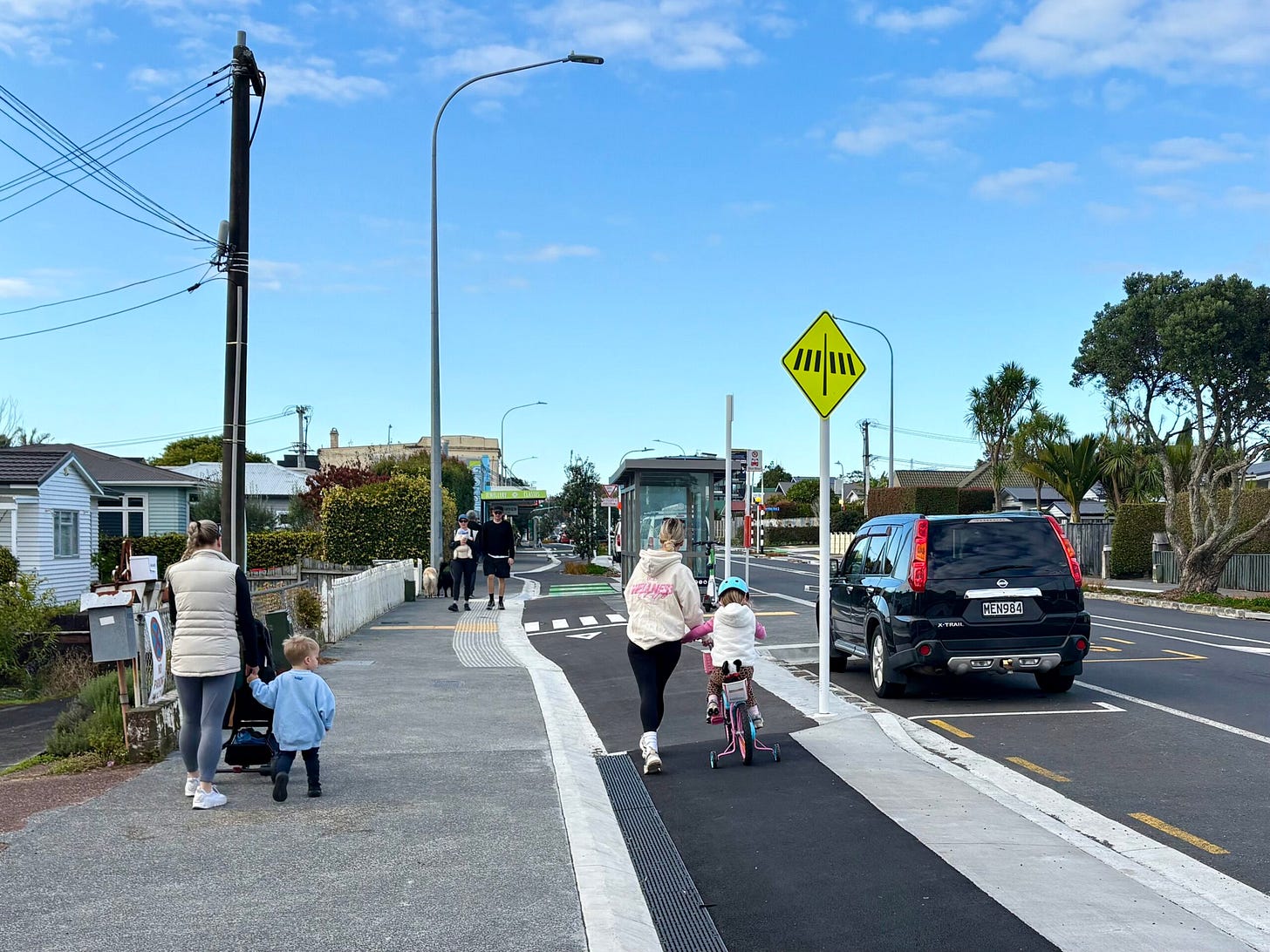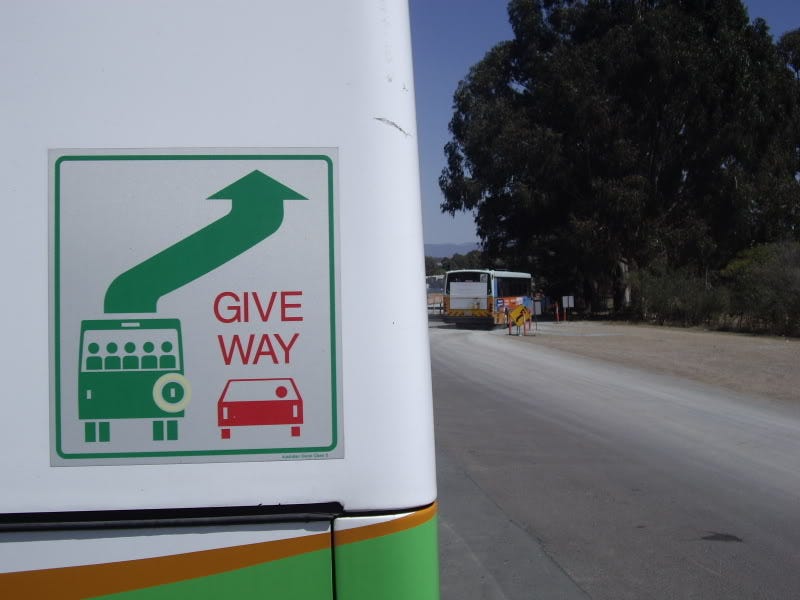Last week Transport Minister Chris Bishop announced some planned transport rule changes including some very welcome and overdue ones for buses, scooters and people on bikes.
The Government is progressing a bold work programme to increase productivity and efficiency through comprehensively reforming New Zealand’s land transport rules, Transport Minister Chris Bishop says.
“Land transport rules set out how different sectors of the transport industry must operate. They impact all road users - from the suburban mum or dad who has to get a Warrant of Fitness every year no matter how new or well-maintained their car, to the truckies who’ve been loaded up with compliance costs due to rules long since made redundant through advances in technology,” says Mr Bishop.
“Right now the rules system is overly cumbersome to update and creates a substantial administrative burden for New Zealand businesses trying their best to operate safely, legally and efficiently.
“The rules are full of nonsensical or outdated requirements. For example, the Road User Rule doesn’t currently permit e-scooters to use cycle lanes or young children to ride their bikes on the footpath. Several rules require hard copy letters to be posted instead of sending emails, which last year alone resulted in 14 million hard copy letters, reminders, and labels being posted at a cost to the taxpayer of $16.8 million. While some of these letters will still need to be printed and posted, the rules reform programme will make it possible for many of these services to be modernised.
“Earlier this year, I started work to update one of the land transport rules by consulting on proposals to reduce how often private motorhomes and vintage cars and motorcycles need to renew their Warrant of Fitness (WOF) or Certificate of Fitness (COF).
“Now we’re taking that same common-sense approach to other transport rules through a comprehensive programme of work to reform and update them, with most decisions expected to be made over the next 18 months.”
The Land Transport Rules Reform Programme includes seven streams of work:
Reducing the frequency of vintage vehicle and motorhome WOF and COF inspections, as previously announced.
Considering additional safety requirements for vehicle imports including a possible phased introduction.
Reviewing WOF/COF frequency and inspection requirements for light vehicles.
Simplifying heavy vehicle driver licencing, weight thresholds, and freight permitting to improve efficiency and productivity for the freight sector.
Enabling digital driver licences and, digital alternatives to WOF/COF/rego stickers, allowing NZTA to electronically collect, store and send regulatory notices, enabling online theory tests, and simplifying identification requirements for NZTA customers.
Improving lane use and use of traffic control devices, and minor system improvements, which will include enabling e-scooters in cycle lanes and children to ride bikes on footpaths, minimum overtaking gaps when passing cyclists, horses etc, and requiring vehicles to give way to buses exiting bus stops.
Overhauling the vehicle regulatory system to make it more efficient, effective and adaptable, including simplifying and refocusing import requirements and streamlining recognition of overseas standards.
Number six is the most interesting to me so I won't comment too much on most of the points, although digital driver licenses are probably quite useful. With the ability to pay for public transport and most retail activities using a phone, if I happen to be driving, the need to carry a driver's license is often the only reason I need a wallet these days. I'm sure I'm not the only one.
As for number six: all of the items listed here were part of the Accessible Street regulation changes consulted on by the last government in early 2020. My understanding is the changes then sat on the minister's desk, waiting for a signature. There were a number of other proposals as part of the Accessible Streets changes that don't appear in this press release so I'm guessing this government is only pursuing the ones they agree with.
Scooters in bike lanes
Transport history (and present) is full of gadgetbahn proposals that promise to revolutionise how we get around our cities. Yet the one thing that has changed transport in recent years and which almost no one saw coming was e-scooters, especially shared, rentable e-scooters. They burst onto the scene around 2018, and have since become a common sight in cities all over the world.
Given the speed of e-scooters, our slowly growing network of separated bike lanes is the perfect place for them to be used – but as we quickly found out, e-scooters are technically not allowed to use them.
So allowing scooters to use bike lanes is a no-brainer. In saying that, has the rule banning them from bike lanes ever actually been enforced?
Children* riding on footpaths
A proper network of safe cycleways is the best-practice standard we should be aiming for. But these will never exist on every single street, and it will take a long time to create them on all of the streets they should be on.
Most parents feel a lot safer if their kids are on the footpath, especially when learning to ride. So, as with allowing scooters in bike lanes, allowing kids to ride on the footpath makes sense.
One immediate question – aside from the question of what age and type of bikes the rule change will apply to – is what about when a parent is riding alongside a child. Are they meant to ride out on the road while their kid wobbles along on the footpath?
The 2020 option actually went a lot further: it was to allow for anyone to cycle on the footpath, but with requirements to travel in a way that isn't dangerous (including speed limits) and giving pedestrians the right of way.
It should be noted that footpath cycling is a deliberate safety choice for many people, including those new to cycling or a bit rusty, and especially where traffic is fast and heavy and there is no safe bike network. So questions around age, type of bike, and meaningful alternatives are bound to come up.
Another oddity of the current rule is that it is based on wheel diameter, and it technically bans all but the tiniest toddler stride-bikes while ironically allowing some small-wheeled adult bikes like Bromptons. (The current rule also has an exemption for people delivering mail and pamphlets, which is why you see the grunty NZPost Paxter vehicles on footpaths.)

Minimum overtaking width when passing cyclists
Again, this is another case where a full network of separated cycleways is the best outcome. Until that time, mandating that drivers must give people on bikes more space is a start, and has been long campaigned for – although it's hard to see it being enforced in practice.
Requiring other vehicles to give way to buses exiting bus stops
A big issue with off-line bus stops (where a bus pulls over into a bus-stop bay) is that they impose significant delays on buses, simply because drivers of other vehicles often refuse to let those buses back into the main flow of traffic.
A few pushy car drivers doing this at each stop can quickly add up to very delayed buses, which makes services slower, less reliable and if it happens regularly, ultimately discourages public transport use. Research from 2017 suggested network-wide delays in Auckland of a total of 29.5 hours a day, just from this one factor.
The 2020 proposal was to make it mandatory for other road users to give way to any bus exiting a bus stop that has indicated for three seconds that it will be pulling out.
When will these changes be implemented? A fact sheet attached to the press release notes that some of these points were previously consulted on but suggests there will be more consultation on both numbers five and six in February next year, with the aim of having the changes signed off by June.
This post, like all our work, is brought to you by the Greater Auckland crew and made possible by generous donations from our readers and fans. If you’d like to support our work, you can join our circle of supporters here, or support us on Substack!







